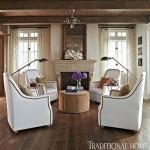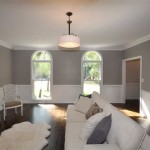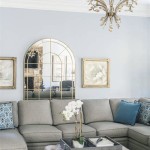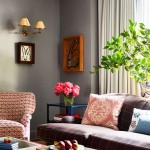Nice Pictures for Living Room Décor: A Guide to Visual Enhancement
The living room, often considered the heart of a home, serves as a central gathering space for family and friends. Its aesthetic appeal significantly impacts the overall comfort and ambiance of the residence. Therefore, selecting appropriate artwork, specifically pictures, plays a crucial role in creating a visually pleasing and welcoming environment. This article explores various factors to consider when choosing pictures for a living room, aiming to guide homeowners in making informed decisions that reflect their personal style and enhance their living space.
Understanding the Impact of Visual Art in Interior Design
Visual art, including paintings, photographs, and prints, serves as a powerful tool in interior design. It contributes to the overall aesthetic by adding color, texture, and depth to a room. A well-chosen picture can act as a focal point, drawing the eye and establishing a sense of harmony within the space. The selection of art should complement the existing décor, taking into account the color palette, furniture style, and lighting conditions. Art can also express the homeowner’s personality and interests, making the living room a more personal and inviting space.
The psychological impact of artwork should not be overlooked. Certain colors and subjects can evoke specific emotions and create different atmospheres. For instance, landscapes often promote feelings of tranquility and serenity, while abstract art can stimulate creativity and intellectual engagement. The size and placement of the artwork also influence its impact. A large, centrally located picture can command attention and set the tone for the room, while smaller pieces can add subtle accents and create visual interest.
Furthermore, artwork can enhance the perceived size and proportions of a room. Strategically placed pictures can create the illusion of more space or draw attention to specific architectural features. Vertical artwork can make a low-ceilinged room appear taller, while horizontal pieces can visually widen a narrow space. The choice of frame and matting also contributes to the overall effect, influencing the perceived size and style of the artwork.
Key Considerations When Selecting Pictures
Selecting the right pictures for a living room involves carefully considering several factors, including the size of the space, the existing décor, the desired aesthetic, and personal preferences. Ignoring these aspects can lead to a visually disjointed and unappealing result.
Size and Scale:
The size of the artwork should be proportional to the size of the wall and the surrounding furniture. A small picture on a large wall will appear insignificant, while a large picture in a small space can overwhelm the room. As a general guideline, the artwork should occupy approximately two-thirds to three-quarters of the available wall space. Consider the width of the furniture underneath the artwork, ensuring that the picture is not significantly wider or narrower than the sofa or console table.Color Palette:
The colors in the artwork should complement the existing color scheme of the living room. Consider the colors of the walls, furniture, and accessories, and choose artwork that either harmonizes with or provides a contrasting accent to the overall palette. Using a color wheel can be helpful in identifying complementary and analogous colors. For example, if the living room features a neutral color scheme, artwork with bold, vibrant colors can add a pop of visual interest. Conversely, if the room is already colorful, artwork with muted tones can create a sense of balance and calm.Style and Subject Matter:
The style and subject matter of the artwork should reflect the homeowner’s personal taste and complement the overall style of the living room. Traditional homes may benefit from classic paintings or portraits, while modern homes may be better suited to abstract art or contemporary photographs. Consider the subject matter of the artwork and how it relates to the overall ambiance of the room. Landscapes, seascapes, and still lifes are often popular choices for living rooms, but personal photographs, abstract compositions, and geometric patterns can also be effective.Framing and Matting:
The frame and matting of the artwork play a crucial role in its presentation. The frame should complement the style of the artwork and the overall décor of the living room. Consider the material, color, and width of the frame, and choose one that enhances the artwork without overpowering it. Matting can be used to create a visual border around the artwork, drawing the eye to the image and providing a sense of depth. The color and width of the mat should be chosen carefully to complement both the artwork and the frame.Budget:
The budget is a practical consideration. Artwork can range from inexpensive prints to original masterpieces. Establish a budget before beginning the search, and explore different options within that range. Prints and posters can be a cost-effective way to add visual interest to a living room, while original artwork can be a valuable investment. Consider visiting local art fairs, galleries, and online marketplaces to find artwork that fits the budget and personal style.Exploring Different Types of Pictures for Living Rooms
The variety of available art types provides ample choices. To select the best pictures for a living room, understanding the different forms of artwork is necessary. Considerations such as the style, material, and subject matter of each type can significantly impact the room's overall aesthetic.
Paintings:
Paintings are a classic choice for living room décor. They offer a wide range of styles, from traditional landscapes and portraits to abstract compositions and modern interpretations. Paintings can be created using various mediums, including oil, acrylic, watercolor, and mixed media. Oil paintings are known for their rich colors and texture, while acrylic paintings are more versatile and can be used on a variety of surfaces. Watercolor paintings are often characterized by their delicate washes and atmospheric effects. The choice of medium depends on the desired aesthetic and the overall style of the living room.Photographs:
Photographs offer a contemporary alternative to paintings. They can capture a wide range of subjects, from landscapes and portraits to abstract compositions and street scenes. Photographs can be printed on various materials, including paper, canvas, and metal. Black and white photographs can add a sense of timeless elegance to a living room, while color photographs can add a pop of visual interest. Consider the subject matter of the photograph and how it relates to the overall ambiance of the room. Landscapes and nature scenes can create a sense of tranquility, while portraits and urban scenes can add a sense of energy and excitement.Prints:
Prints, including lithographs, etchings, and screen prints, offer a more affordable way to add artwork to a living room. Prints are often created in limited editions, making them more valuable and collectible than mass-produced posters. Lithographs are created using a stone or metal plate, while etchings are created using a metal plate that has been etched with acid. Screen prints are created using a stencil and a screen. Prints can be framed and matted to enhance their presentation. Consider the subject matter and style of the print, and choose one that complements the overall décor of the living room.Posters:
Posters are a cost-effective way to add visual interest to a living room. They are available in a wide range of styles and subjects, from movie posters and vintage advertisements to abstract designs and motivational quotes. Posters can be framed or hung directly on the wall. Consider the subject matter and style of the poster, and choose one that reflects personal interests and complements the overall décor of the living room. Posters can be a great way to add personality and character to a space without breaking the bank.Mixed Media Art:
Mixed media art combines different materials and techniques to create unique and textured artwork. It can incorporate elements of painting, sculpture, and collage. Mixed media art can add depth and visual interest to a living room. Consider the materials and techniques used in the artwork, and choose one that complements the overall style of the room. Mixed media art can be a great way to add a touch of originality and creativity to a space.Ultimately, the choice of pictures for a living room is a personal one. By understanding the impact of visual art, considering key selection factors, and exploring different art types, homeowners can create a visually stunning and welcoming living space that reflects their individual style and enhances their overall quality of life.
:strip_icc()/cdn.cliqueinc.com__cache__posts__277905__nice-living-rooms-277905-1551211038601-main.700x0c-535ecf8b15f84d1e91827c0cedc08781.jpg?strip=all)
5 Nice Living Rooms To Inspire Your Home Décor

Beautiful Living Room Ideas And Designs Designcafe

Creating A Cozy Living Room For Fall Rockhaven Homes

10 Living Room Features Pros Always Recommend

House Home 10 Living Room Design Ideas You Ll Love

45 Creative Aesthetic Living Room Decor Ideas Displate Blog

Creating A Cozy Living Room For Fall Rockhaven Homes

Living Room Decor

9 Budget Friendly Living Room Ideas That Maximize Your Space

30 Modern Living Room Ideas That Will Transform Your Space Shuttercraft








